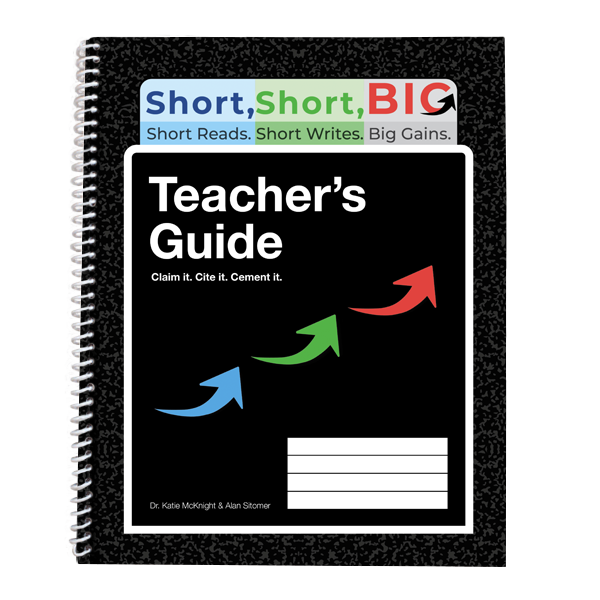
The Teacher’s Guide
Take the ambiguity out of teaching writing.
You don’t have to figure it out alone—teachers love Short, Short, BIG! because it’s been written by real teachers for real teachers.
One glance at the materials and you’ll see what we mean.
Clear, well-designed lesson plans • Recommended times • Resources • Classroom tips
A core belief of Short, Short, BIG! is that both classroom leaders and learners matter! Opportunity for developing teacher-student relationships is embedded in the materials.
Short, Short, BIG! enables educators to adhere to the 4 core principles of culturally responsive education:
Of course, building culturally responsive materials is an ongoing commitment. This is why at Short, Short, BIG! our text collection, powered by Saddleback Publishing, essential questions, learning activities and professional development seek to reflect the diversity of our learners (including, but not limited to, ethnicity, background and individuals with special needs).
Short, Short, BIG! is designed for immediate classroom implementation. Teacher support is embedded right in the materials! If you want to take it up a notch, or if your situation requires additional support, our experts are available to help.
The authors of Short, Short, BIG! are highly-sought after professional development specialists who have partnered with schools across the nation. Both Dr. Katie McKnight and Alan Sitomer have worked as university professors in the graduate school of education where their foremost role was to prepare teachers to be successful in an ELA classroom.

Details:
276 pages
spiral bound
full scope and sequence
research-based, data-driven lesson plans
targeted instruction on:
advancing from from well-crafted topic sentences to the writing of smartly organized, well-written evidence-based paragraphs
SQ3R reading comprehension
fostering high-level thinking and expression across the four domains of literacy: reading, writing, speaking and listening.
avoiding fragments and run-ons (plus grammar)
robust assessment including:
pre- and post measurements
formative assessments
evaluation rubrics
valuable “tricks of the trade” to support instruction AND student learning
strategic evaluation techniques to help monitor students’ progress
differentiated instruction to accommodate varied learning styles










